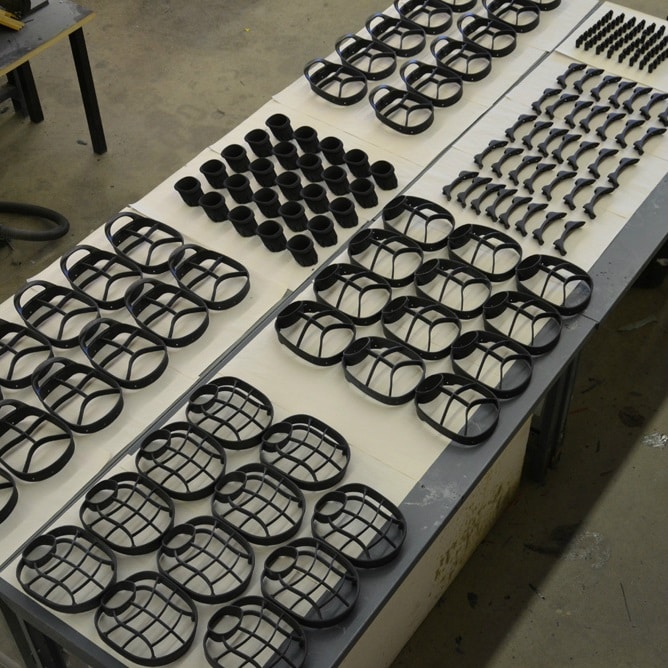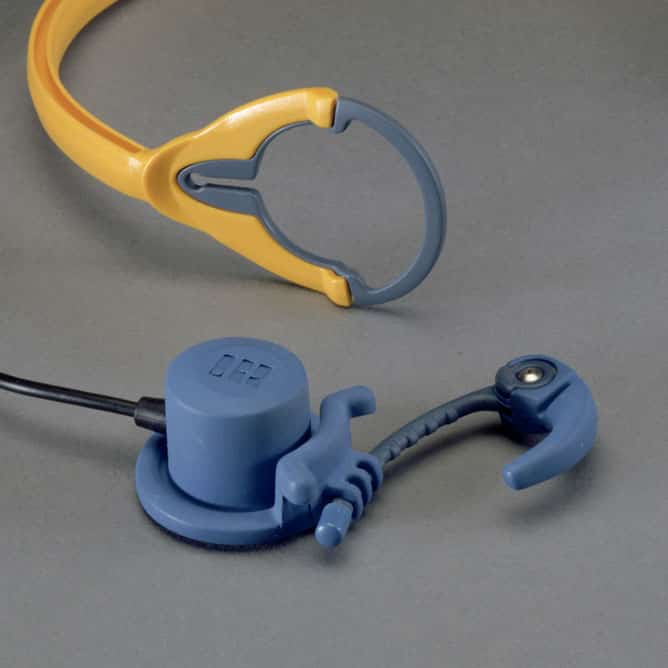To get production quality urethane castings you need two things: RTV silicone tooling, and vacuum casting machines. Vacuum casting gives you consistent void free urethane parts that can be molded in color and texture.
This service is perfect for projects that require low to medium volume parts and for validating design features and assembly conditions. RTV Molding (also known as “soft-tooling”) uses high-grade silicone to capture and replicate fine surface detail. Its inherent flexibility allows for part features that are impossible with conventional tooling, such as no-draft surfaces, variable wall thicknesses, and undercuts in geometry. From casting rigid structural components to flexible over-molds, there is a material to suit any function (strength, flexibility, transparency, porosity) – all at a fraction of the cost of injection molds.
The Process
In the RTV (Room Temperature Vulcanized) tooling process, liquid silicone rubber is poured around a master pattern. The resulting mold is pulled from the pattern and cured, then subsequently used to cast urethane parts.
- Rapid prototype or CNC machined patterns are used to create RTV tooling
- Parts are then cast from a wide range of material options, from rigid urethane and epoxy to soft rubber and flexible foam
- Parts are offered as painted or cast in color and texture finishes packed and ready for assembly or as turn-key housings
The Benefits
- Urethane casting is low cost compared to the tooling costs required for mass manufacturing
- RTV Tooling is more easily constructed than hard steel tools and can be easily modified
- Parts can be manufactured quickly to prove out your design prior to production
- Dyes can be mixed into the resin prior to casting, eliminating the need to paint parts
- Many material properties can be achieved including rigid and flexible parts from 10 Shore A to 80 Shore D
Gallery of RTV Parts











